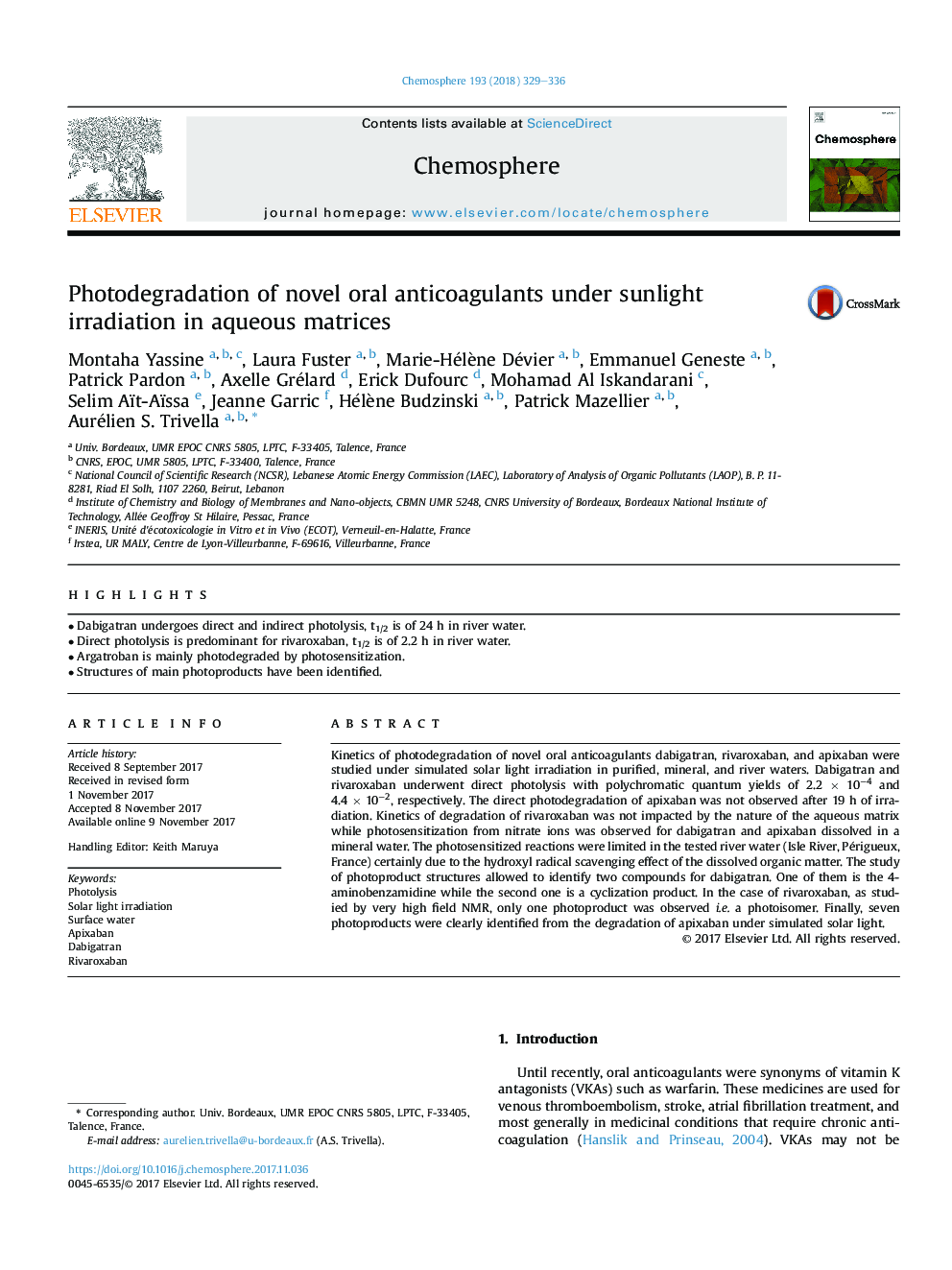| Article ID | Journal | Published Year | Pages | File Type |
|---|---|---|---|---|
| 8852558 | Chemosphere | 2018 | 8 Pages |
Abstract
Kinetics of photodegradation of novel oral anticoagulants dabigatran, rivaroxaban, and apixaban were studied under simulated solar light irradiation in purified, mineral, and river waters. Dabigatran and rivaroxaban underwent direct photolysis with polychromatic quantum yields of 2.2Â ÃÂ 10â4 and 4.4Â ÃÂ 10â2, respectively. The direct photodegradation of apixaban was not observed after 19Â h of irradiation. Kinetics of degradation of rivaroxaban was not impacted by the nature of the aqueous matrix while photosensitization from nitrate ions was observed for dabigatran and apixaban dissolved in a mineral water. The photosensitized reactions were limited in the tested river water (Isle River, Périgueux, France) certainly due to the hydroxyl radical scavenging effect of the dissolved organic matter. The study of photoproduct structures allowed to identify two compounds for dabigatran. One of them is the 4-aminobenzamidine while the second one is a cyclization product. In the case of rivaroxaban, as studied by very high field NMR, only one photoproduct was observed i.e. a photoisomer. Finally, seven photoproducts were clearly identified from the degradation of apixaban under simulated solar light.
Related Topics
Life Sciences
Environmental Science
Environmental Chemistry
Authors
Montaha Yassine, Laura Fuster, Marie-Hélène Dévier, Emmanuel Geneste, Patrick Pardon, Axelle Grélard, Erick Dufourc, Mohamad Al Iskandarani, Selim Aït-Aïssa, Jeanne Garric, Hélène Budzinski, Patrick Mazellier, Aurélien S. Trivella,
